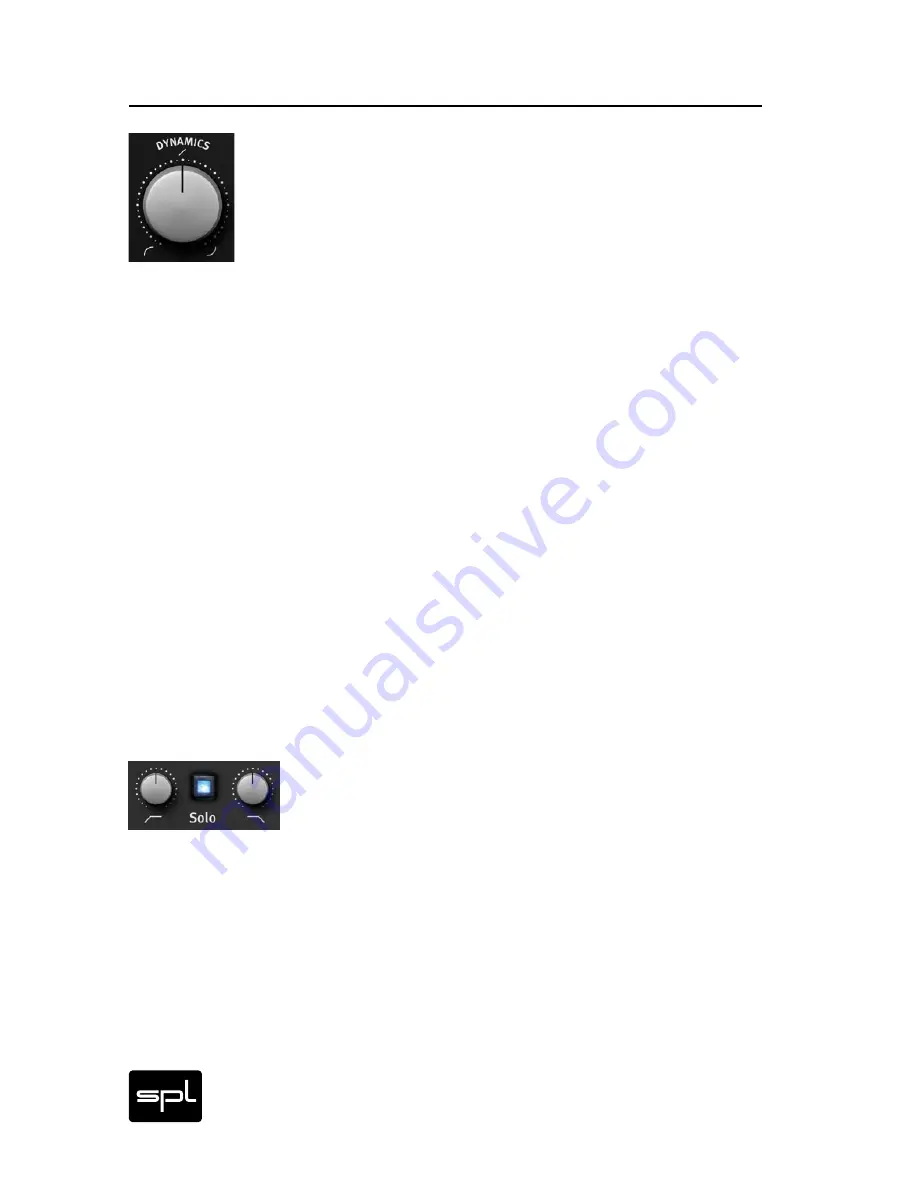
26
DrumXchanger Analog Code
®
Plug-in
SAMPLE Module
Control Elements
Dynamics
This control determines how the DrumXchanger reacts to level
variations in the original signal and plays back loud or soft sam-
ples accordingly.
In the center position the relation is linear, i.e. the relation of the
original sounds to the loudness of the samples follows a linear pat-
tern. This linearity is indicated by the straight line above the center
position of the knob. The more you turn the knob to the left, the
faster the volume of the played back samples increases. This rela-
tionship, where the dynamic differences are very small, is indicated
by the rapidly increasing curve at the left end of the knob.
On the contrary, if you turn the knob to the right, the volume of
the samples increases more slowly. This relationship, where the
dynamic differences are larger, is indicated by the slowly increasing
curve at the right end of the knob.
Two application examples: to even out fluctuating drum sounds turn
the knob to the left; the further you turn, the higher chances are that
samples with the same volume are played back (= lower dynamic
range).
When you wish to replace ghost notes but the sounds are too loud,
turn the DYNAMICS knob to the right to increase the dynamic range.
By doing so, the loudest samples will be played only with the loud-
est drum hits.
High and low pass filters
The first controls in the Sample module’s right-hand
column are a high and a low pass filter, just like on the Origi-
nal module. A high pass filter (HPF) only allows frequencies above
a certain frequency to pass through, while a low pass filter (LPF)
only allows frequencies below a certain frequency to pass through.
These filters allow you to cut the low or high end of the sample
signal to focus on a narrower frequency range. These settings have
no influence whatsoever on the sound recognition or the Trigger
module, nor do they affect the sound of the original signal. The
high pass filter goes from 20 Hz to 11 kHz. The low pass filter goes
from 20 Hz to 22 kHz.







































